One of the bibles of bread baking is The Bread Baker’s Apprentice (Amazon affiliate link there, folks). I would love to master everything in this book. As it stands, I have humbly tried my hand at a few recipes, and had them turn out decently. Not the works of art I want, but that will come in time. For now, I’ve got delicious loaves of bread. Today, I made the French bread recipe.
It uses a starter (called pate fermentee) that the author suggests starting the night before; you’re to let it rise slowly in the refrigerator. However, he mentions that you can use it the same day; instead of a one-hour rise before chucking it in the fridge, you just do a two-hour rise at room temp. That’s what I did.
First, you measure out your dry ingredients. Then, add water. I accidentally added too much water. Folks, make sure to check your 1/4 cup measuring cup is not suddenly a 1/3 cup measuring cup.
So, this is a little on the sticky side compared to how I think it was supposed to be. I went with it, though.
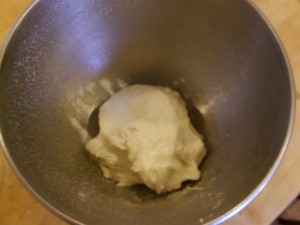
After about 4 minutes of kneading in the stand mixer with the dough hook (not pictured), it was ready to rise
Cover with plastic wrap, and fast forward 2 hours…
Now, you do the strangest thing: cut the starter dough up into chunks, and add it to another round of all the same ingredients you used the first time, in the same quantities. Basically, you do the whole thing over again, except you’re adding in chunks of this first round of dough. Yeah. Also, you use warmer water this time. And (if you’re me) you realize partway through that you’d been using the 1/3 cup measuring cup and not the 1/4 cup, so you use a more fitting amount of water this time.
Notice the bench scraper. This tool is awesome. I’ve seen them sold for $20+. DON’T FALL FOR IT! I got mine for about $2.50 at a local restaurant supply store. At least in my area, these stores are open to the public. Look into it. Some stuff they have (though not all) is quite cheap. Use this tool to cleanly cut soft stuff. Like dough. Or scrape stuff off of flat surfaces.
Weird, huh? You mix this all together and then add your water, and then use the dough hook to knead again. To tell if it’s done, you take a little chunk of the kneaded dough and stretch it out slowly, until you can see through it. If you can see through it without it breaking, it has passed the “windowpane test.” Mine didn’t do as well as I wanted it to, but I’d already kneaded it quite a bit past the amount of time it was supposed to take, so I went with it. The book claims it’s very hard to over-knead dough on home equipment, so maybe I should’ve just kept going.
Now it gets to rise for a while.
Isn’t time-lapse photography great?
These are my loaves. I made them too long to fit on a sheet tray, so I cut the ends off and made little irregular rolls. Why not?! Anyway, you’re supposed to handle the final dough as little as possible – ever noticed the big holes you get in really nice French bread? those deflate if you’re too rough with the dough – so I figured I’d cut my losses (as it were!) and cut the ends off and throw ’em alongside rather than try to reshape everything.
Now, they’re going to rise a bit more.
Now for the scoring! I need a lesson in this. My cuts in loaves aren’t as clean or deep as they should be. Scoring loaves helps them rise evenly in the oven (because bread does typically rise a little more at the very beginning of baking; this is known as oven spring) without bursting, and it makes them pretty.
These loaves are resting on cornmeal. They were rising on parchment paper, as you might have noticed, but I did not bake on parchment paper. Baking starts at 500°, and parchment paper is only rated up to 425°. Oven fires = bad.
For crispness and brownness of crust, this recipe has you imitate the conditions of a professional oven with a steam setting. There are a couple of ways to do this. The first way involves putting a deep pan in the bottom of your oven, before pre-heating it, and VERY CAREFULLY pouring water in the pan after it’s pre-heated, right before you put the loaves in. This scares me, and I don’t do it. The second way, which I do, involves spraying the sides of the oven with a spray bottle of water. You do a few sprays on each side of the oven (I do 7 or 8 on each side), then quickly close the door, then repeat at 30-second intervals, for a total of four spraying sessions. After that, you turn the heat down.
CAUTION: You must be very careful not to shatter the glass on the oven door or the light bulb in the oven. Be sure to avoid the light bulb, and you should place a dry towel over the glass of the oven door while you’re spraying the walls of the oven.
So, here’s the inside of one of my loaves:
Delicious! But no big holes. I must learn to handle the dough more delicately; and possibly, the rising didn’t go quite as exquisitely as it might’ve. There are so many variables in this process! But if I can get a bread that rises, and tastes good, I’m pretty happy. I look forward to baking bread professionally someday (we don’t do yeast breads at my current job), but til then, I’ll happily do my best at home, with my books. 🙂
As for the recipe: it’s really long, and I feel iffy about republishing it freely, as it goes into quite a bit of detail. If you’re interested, drop me a line, and I’ll see if I can help you out!
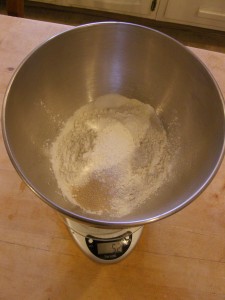

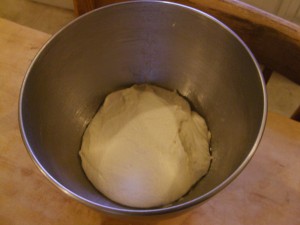
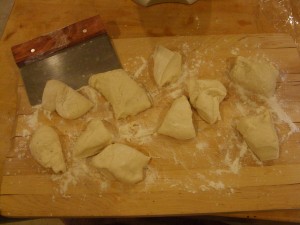
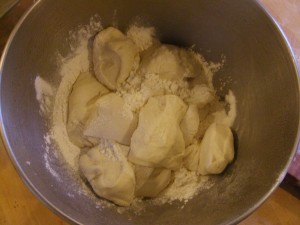
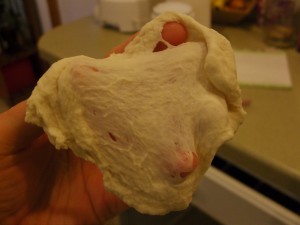
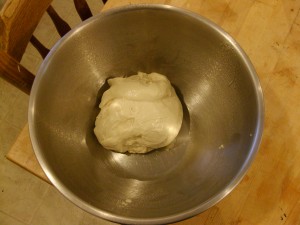
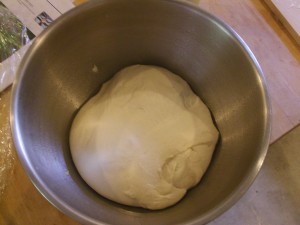
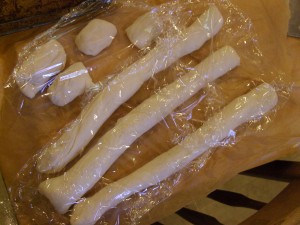

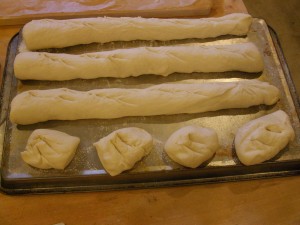
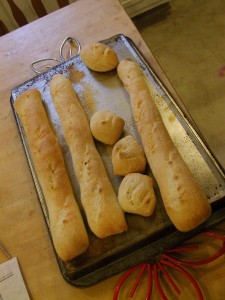
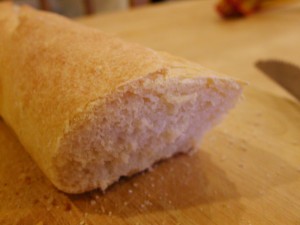
Wow. That seems labor-intensive. And it smells so good, even from here! YUMMMMMMMM!